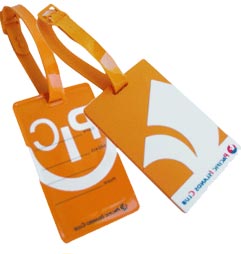Standard Regulations & Labellings
Generally
speaking, pharmaceutical distribution patterns for solid oral dosage drug
pharmaceuticals (pills, capsules, and tablets) are markedly different in the
US than those used in the EU. This is true even for drugs that are
manufactured by the same company. That is, pharmaceutical manufacturers
commonly employ different packaging and distribution practices for exactly
the same product depending on where the drugs will eventually be sold.
While these differing systems have been in place for decades, powerful
forces are currently in play that could alter packaging and distribution
networks on both sides of the Atlantic. Indeed, over the next five to 10
years it is entirely possible that one of three scenarios will overtake
current systems:
- The US pharmaceutical packaging and distribution chain may come to
look more like that in the EU;
- The EU system may come to look more like the US; or
- A hybrid of the two will become a global model.
In the EU, solid oral dosage products are typically packaged by the
manufacturer in a unit dose blister card, whereby each individual dosage
unit is housed in a separate cavity. These packages are distributed to
pharmacies and dispensed to the patient without the need for any type of
repackaging other than the application of pharmacy labeling. When the
patient picks up his/her prescription, therefore, they are given a product
that has been in the same container since the time of manufacture. In
addition, the packaging typically includes a leaflet that was also prepared
by the manufacturer outlining important drug-related information.
In the US, on the other hand, most solid oral dosage drugs are shipped by
the manufacturer in a bulk container, most commonly a 100-count bottle. Bulk
bottles often find their way to pharmacies through a network of wholesalers
such that the manufacturer's original container may have changed hands
several times before it reaches the pharmacy. In the pharmacy, drug products
originally placed in bulk bottles by the manufacturer must be repackaged
into smaller containers by pharmacy personnel which, in turn, are dispensed
to patients. If any printed information is given to US patients at all, it
is usually printed in the pharmacy based on data provided by unregulated,
third-party vendors.

While the US government does require that all pharmaceutical products be
shipped with information intended for physicians and pharmacists, these
product inserts are typically written in language that is not useful to
patients. There are some classes of drugs - oral contraceptives for
instance, that must be shipped with patient-oriented leaflets under US
regulations. There are also a handful of drug products that the US Food and
Drug Administration (FDA) deems so potentially dangerous if they are not
taken properly that it requires manufacturers to provide patient-oriented
literature. Otherwise, the vast majority of pharmaceutical products
dispensed in the US are given to patients with no manufacturer-prepared
information whatsoever.
When comparing the two systems, the EU system offers some obvious consumer
advantages. EU patients, for example, receive their prescriptions in
tamper-resistant packaging that:
- Protects the drugs from atmospheric exposure;
- Eliminates any possibility of dispensing error due to pharmacy
repackaging;
- Allows the drugs to be stored in humid areas without fear that they
will lose their efficacy; and
- Provides assurance that medications have not been handled by anyone
other than the manufacturer and the patient.


 While the US government does require that all pharmaceutical products be
shipped with information intended for physicians and pharmacists, these
product inserts are typically written in language that is not useful to
patients. There are some classes of drugs - oral contraceptives for
instance, that must be shipped with patient-oriented leaflets under US
regulations. There are also a handful of drug products that the US Food and
Drug Administration (FDA) deems so potentially dangerous if they are not
taken properly that it requires manufacturers to provide patient-oriented
literature. Otherwise, the vast majority of pharmaceutical products
dispensed in the US are given to patients with no manufacturer-prepared
information whatsoever.
While the US government does require that all pharmaceutical products be
shipped with information intended for physicians and pharmacists, these
product inserts are typically written in language that is not useful to
patients. There are some classes of drugs - oral contraceptives for
instance, that must be shipped with patient-oriented leaflets under US
regulations. There are also a handful of drug products that the US Food and
Drug Administration (FDA) deems so potentially dangerous if they are not
taken properly that it requires manufacturers to provide patient-oriented
literature. Otherwise, the vast majority of pharmaceutical products
dispensed in the US are given to patients with no manufacturer-prepared
information whatsoever.